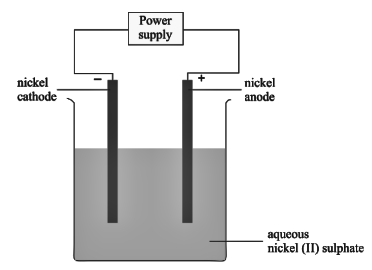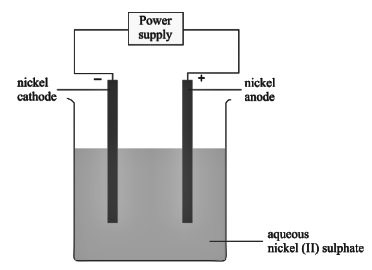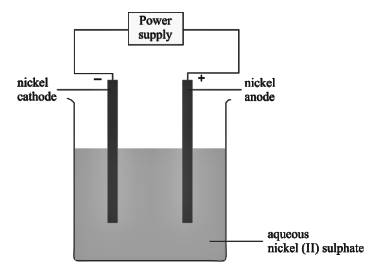EASY
Earn 100
How many of the following will have negative standard reduction potentials?
50% studentsanswered this correctly
Important Questions on Redox Reactions
MEDIUM
Given
and
HARD
An aqueous solution of nickel (II) sulphate was electrolyzed using nickel electrodes. Observe the diagram and answer the question that follows:

- Name the cation that remains as a spectator ion in the solution.
HARD
An aqueous solution of nickel (II) sulphate was electrolyzed using nickel electrodes. Observe the diagram and answer the question that follows:

- What do you observe at the cathode and anode respectively?
MEDIUM
EASY
[Given : ]
(i)
(ii)
(iii)
(iv)
MEDIUM
HARD
An aqueous solution of nickel (II) sulphate was electrolyzed using nickel electrodes. Observe the diagram and answer the question that follows:

- Which equation for the reaction at the anode is correct?
EASY
MEDIUM
EASY
The electrode potential, for the reduction of to in acidic medium is
V. Which of the following metal(s) will be oxidised? The reduction reactions and standard electrode potentials for and are given as
EASY
EASY
EASY
MEDIUM
MEDIUM
(i)
(ii)
(iii)
(iv)
EASY
MEDIUM
Ag+(aq) , Cu(s) Report the value of
EASY
EASY
EASY

